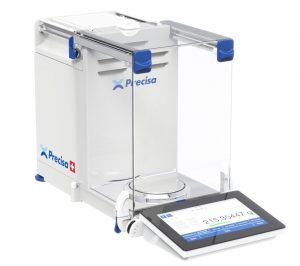The Series 390: The Perfect Balance of Weighing Accuracy and Reliability
Key Points:
- Consistent weighing accuracy and reliable results are a key factor in quality laboratory results.
- There are a wide range of environmental factors that can affect weighing accuracy: including electrostatic charges, temperature and buoyancy
- External factors affect your weighing accuracy, and that’s why Lab products by Precisa developed the ECS, AOS and BEST features to ensure consistent and reliable results
- The wide variety of features in the HF model of Precisa Series 390 balance promises you the best possible accuracy and precision for years to come
A balance can be found in almost every laboratory worldwide, and is commonly used daily, but what happens if your balance isn’t reliable? Unfortunately, a small error in weight can have a significant impact in the lab, which is further escalated as the process moves further downstream. Whilst it might seem like an insignificant error to begin with – it can result in major errors, and generate unreliable results and unreproducible data, wasting your valuable time and resources.
Precisa Series 390 Balance
Factors Affecting Weighing Accuracy
Various different types of inaccuracies can occur whilst weighing, with issues arising from the user, the environment and the balance itself. These errors can be obvious, such as ensuring your balance is clean and trying not to drop it on the floor (although, we can’t keep our balance all the time). However, the list of potential errors is much longer than that – your balance should be placed in an appropriate environment which is free from draughts and vibrations and is on an even surface. Additionally, you should ensure the balance is calibrated and all relevant routine tests have been conducted prior to using the balance.
Unfortunately, there are also other potential areas for errors to occur which are much less apparent – temperature, buoyancy and electrostatic charge can all affect weighing results and are often an overlooked area of error. Our customers often ask us how electrostatic charges and buoyancy occur, how they can affect their weighing results, and how to avoid them to ensure precise weighing.
This blog aims to answer these questions as generating accurate, reliable and reproducible data is essential, therefore it is vital to utilize a balance you can consistently rely on. At Precisa, we understand how important this is, and the Series 390 balances were made with this in mind – to ensure consistently reliable results, so you can focus on what’s important.
Key Features of Improve Weighing Accuracy
- Neutralizing electrostatic charges
Electrostatic charges are one of the most overlooked weighing issue in balances, and can be generated through friction – for example if you dry a glass beaker with a cloth this creates friction, and in turn electrostatic charges. These charges tend to dissipate over time, however a large quantity of laboratory vessels that are used for weighing are efficient electrical insulators – meaning that these charges are retained for a longer period of time.
If you bring an object into your weighing chamber which has an electrostatic charge – a complementary charge is induced – resulting in your weighing vessel either appearing lighter or heavier than it truly is depending on the polarity of the electrostatic charge. Unfortunately, there are no apparent signs that your vessel is electrically charged. So if there is no proper cancellation method, inaccurate results can be produced without you even realizing it.
Here at Precisa, we understand the importance of generating accurate and reliable data, and that’s why the Series 390 HF balance comes with the electrostatic cancellation system (ECS). This sophisticated system is able to quickly neutralize any electrostatic charges through an AC pulse technique utilizing an ion neutralizing system. The ionizer is controlled by the balance – ensuring the correct and consistent neutralization of the electrostatic charges. This ensures that your balance becomes a system that is optimally suited for determining the weight of all materials, including ones that are electrostatically charged.
- Environmental considerations for weighing accuracy
Whilst a balance can perform a wide variety of functions, it is unable to simultaneously determine the density of the sample being weighed and the air, and therefore a buoyancy error correction needs to be generated. That’s why Precisa created an ambient aobservation system (AOS) – which measures the ambient air temperature, pressure and humidity within the weighing chamber, allowing the monitoring and logging of all relevant environmental conditions.
However, we don’t just want to acknowledge this difference, we want to counteract it to ensure accurate weighing consistently occurs. Therefore, Precisa developed the buoyancy error suppression technology (BEST), and when combined with the AOS, results in a fully automatic buoyancy correction system. With this technology, you ensure you consistently receive the best weighing results.
This feature is particularly important when making high precision measurements – and provides the user with security, knowing that the results generated will always be accurate – despite the external factors which could affect a different balance.
Find out more
To find out more about the features of Precisa 390 you can visit the Series 390 pages.




